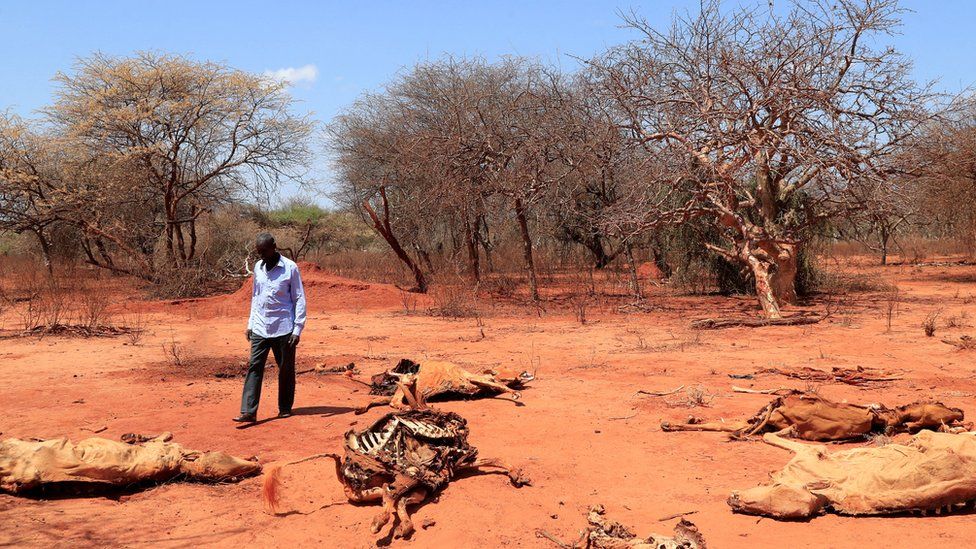-

-
-
Loading

Loading

Local officials in Ethiopia have reported that more than 50 people have died in the Tigray and Amhara regions due to a combination of drought and an aid freeze. The Horn of Africa has experienced five unsuccessful rainy seasons since 2019, according to the United Nations. The United States and UN suspended aid earlier this year following allegations of theft, exacerbating the humanitarian crisis. In Tigray, which is still recovering from a two-year civil war that concluded a year ago, and in Amhara, a conflict has erupted. Approximately 46 people died in the town of Yechila in Tigray, and six deaths were recorded in the neighbouring Amhara region of Wag Hemra due to food shortages. The severe drought has also resulted in more than 4,000 cattle deaths. Meanwhile, the southern and eastern regions of Ethiopia are grappling with flash floods. The UN released a statement on X, previously known as Twitter, stating that over 370,000 individuals have been displaced from their homes due to the floods. In the eastern Somali region, at least 43 people have lost their lives due to flooding and landslides. During the Tigray war, the region was cut off from humanitarian aid, leading to an unknown number of deaths. Estimates suggest that around 500,000 people may have perished under "famine-like conditions." The conflict in Tigray concluded with a peace deal brokered by the African Union between the Ethiopian government and the Tigray People's Liberation Front (TPLF). However, after the conflict, the flow of aid was halted in June when the US and UN suspended humanitarian assistance due to systematic theft by corrupt officials. The US has announced plans to resume widespread food deliveries in December, stating that significant reforms have been implemented to ensure the supplies reach those in need. In recent weeks, heavy rains and flash flooding have claimed 130 lives in Ethiopia, Kenya, and Somalia. The United Nations has referred to these events as a "once-in-a-century event." Fati N'Zi-Hassane, Oxfam in Africa Director, commented that the region is experiencing recurring and intensified climatic shocks, leading to successive disasters. Somalia, which has suffered from devastating droughts in recent years, has been particularly affected by the floods, with Beledweyne being the most severely impacted town. The El Nino phenomenon, caused by warming in the Pacific Ocean, has significantly influenced East Africa, resulting in flooding, cyclones, drought, and wildfires.